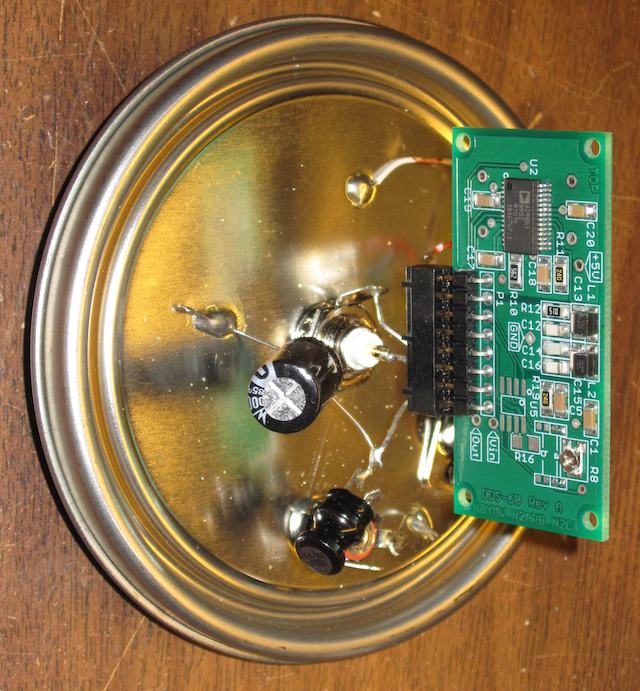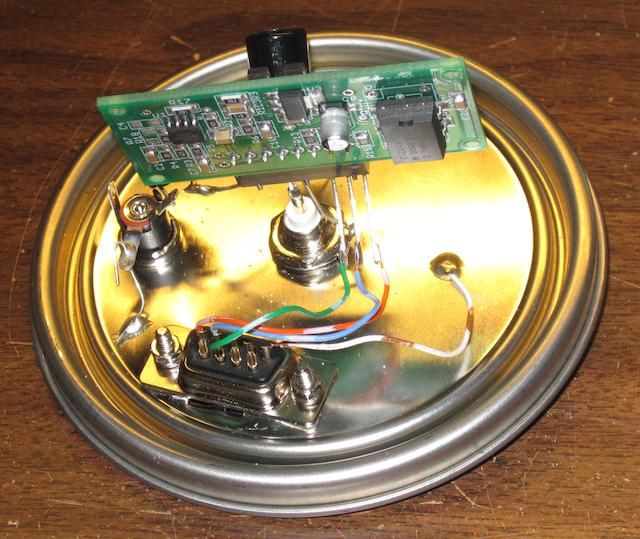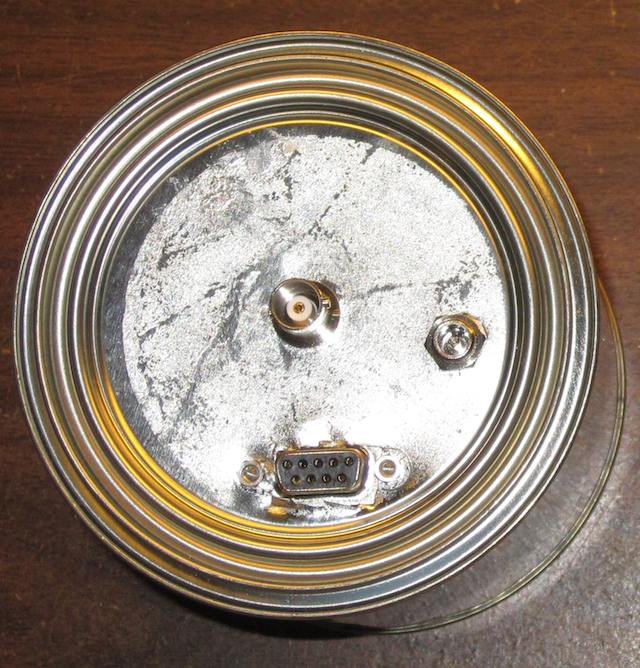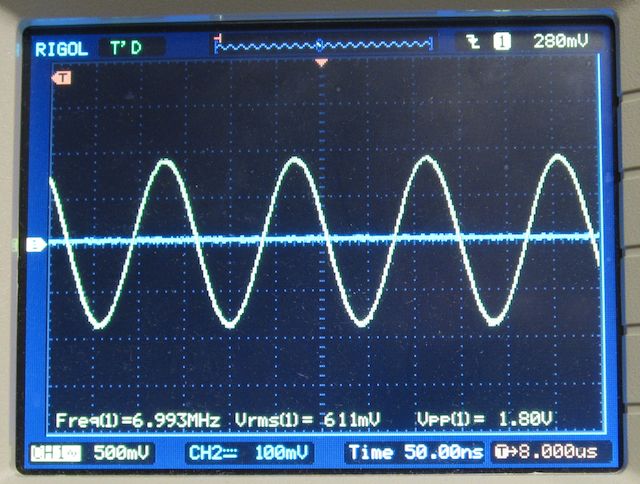Recently I put together a DDS-60. DDS stands for Direct Digital Synthesizer. It is a way to generate arbitrary frequencies. Samples are fed to a D/A (Digital to Analog Converter) at a fixed clock rate (in this case 180 MHz derived from a 30 MHz oscillator). These samples are generated by a NCO (Numerically Controlled Oscillator). Think of it as a sine wave being generated point by point, at a fixed (depending on the ratio of the output frequency to the 180 MHz clock) number of degrees per sample. The output frequency can instantly be changed by just altering this degrees per sample value.
In the case of the DDS-60, any output frequency from 0 to 60 MHz can be generated. AD9851 DDS chip is used. This chip, along with a buffer/amplifier, low pass filter, and voltage regulator is all contained on a small (about one by two inch) board. The output amplitude is set by a small trimmer pot, with a maximum of about 4 volts peak-peak.
Three TTL level digital control lines are used to select the frequency. In my case, I have them connected to the parallel port of a PC.
I mounted the DDS-60 on the underside of the lid of a one quart paint can. The output goes to a BNC connector, there is also a 2.5mm barrel jack for 12V DC power, and a 9 pin D-SUB connector for the digital lines to the PC:

There is a small LC filter (about 3 mH and 1000 uF) on the incoming DC power line.

Here is the resulting unit. Ugly, but it works!

And here is the output on a scope:

So what can you do with a DDS?
First, it’s a very handy piece of gear for the RF test bench. You have a stable and precise source of RF that can cover the entire LF, MF, and HF bands. One of my next goals is to write some software to do automated testing and sweeps of RF, using an RF voltmeter as the input. I hope to blog about that shortly.
Second, you can use it as an exciter to drive an RF amplifier.

Super posting, I must say i look forward to updates of your stuff.